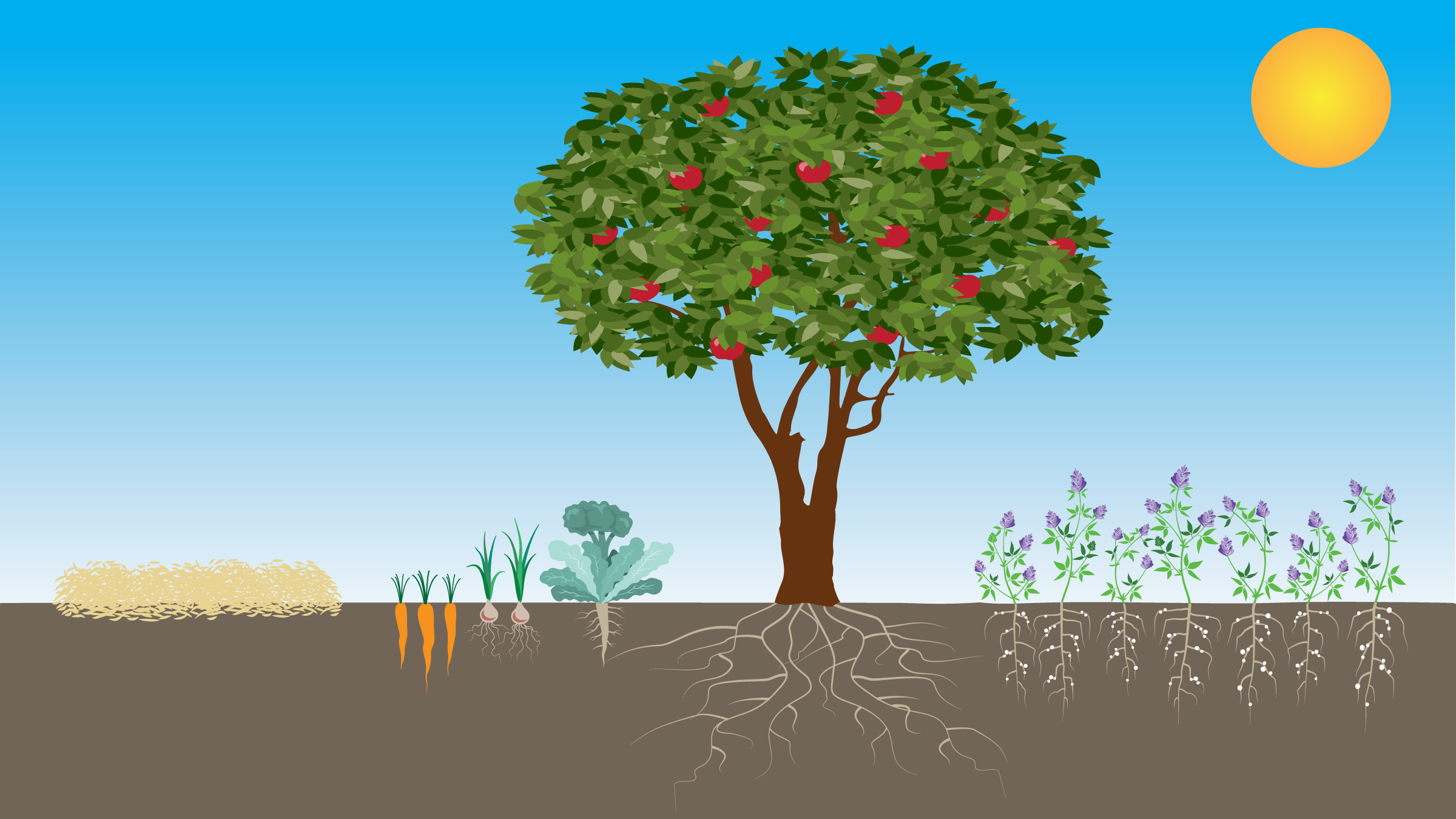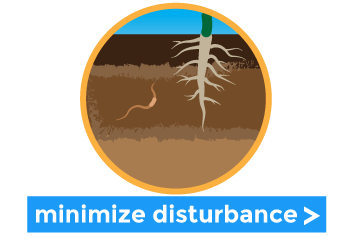





click to learn more
Maintaining biodiversity in organic systems is key to controlling pests and diseases, as well as maintaining soil health. For example, the roots of different crop species provide food for different kinds of beneficial soil microorganisms. Farmers can enhance biodiversity in a number of ways, such as growing different crop species together in a field (intercropping) or by planting different crop species after one another (crop rotations).
Minimizing soil disturbance not only helps keep carbon and other greenhouse gases trapped in the ground, it also protects beneficial soil life that helps make nutrients available to crops. Farmers can minimize soil disturbance by practicing reduced and/or conservation tillage, which limits the frequency and intensity with which farmers turn over the soil.
Plant roots not only help to hold soil in place, they also provide food and habitat for beneficial soil life. These roots also help trap carbon deep in the soil, making it harder for it to re-enter the atmosphere. In annual crops like tomatoes or corn, planting cover crops after the growing season is an effective method for making sure roots are present throughout the year and that soil life doesn't go hungry.
Soil is the foundation for plant life and is the farmer's most precious natural resource. Keeping the soil covered reduces the chances that top soil will be lost to wind or water erosion. Planting cover crops and keeping plant residues in the field are good methods for protecting soil.



